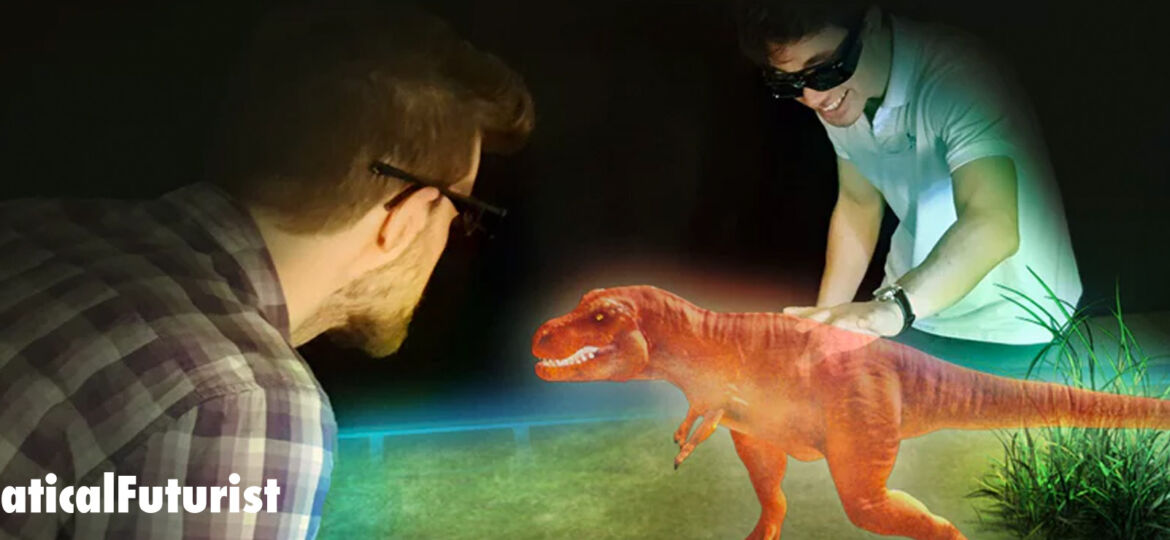
WHY THIS MATTERS IN BRIEF
Holograms are a science fiction staple, and using a trick of the light, Euclideon and their new holographic table have gotten closer to bringing them to reality than anyone else.
This week Australian company Euclideon announced they’ve managed to build what is being dubbed as the “world’s first multi-user holographic table” that allows up to four people to walk around a holographic image and interact with it wearing only a small set of glasses. And it’s set to go on sale in 2018.
Holograms have been a sci-fi staple for decades and while new emerging technologies like Augmented Reality (AR) and Virtual Reality (VR) have advanced at quite a clip recently it’s fair to say that so far, while we’ve seen some advances in holographic technology, such as the recent announcement from the Australian National University who’ve managed to create ultra-skinny holograms using tiny silicon pillars that are each thinner than a human hair, there’s not been much else to crow about. And, frankly, that’s what made me suspicious about the tone of this latest announcement – all of a sudden we’ve moved from nanoscale proof of concepts to a fully immersive experience.
Hmmmm, anyway, let’s have a closer look at it.
Today there are a whole host of issues with holograms, the first problem is creating them, and then the second, once you’ve solved the first, is creating ones that lots of different people can view properly from different angles, which, as ironic as it might sound, is actually a huge technical challenge.
So let’s dive into Euclideon’s tech.
When you first see the “Hologram Table,” which is 1.5m by 1.5m square, it looks very similar to one of the air hockey tables that you see so often in arcades, the only difference being that it’s strapped with sensors that track your position, and it has what looks like a multi-coloured screen in the middle. However, when you put on a pair of special glasses the “holograms” jump out at you. And this is where Euclideon’s claim to have created the world’s first holographic table make sense, but there’s an important distinction I now need to make.
In science fiction films what we often see are what I’ll call “Free Form” holograms, you know the ones – they float in mid-air and can be manipulated using little more than gestures, and you don’t need to wear any faces gadgets on your head – creating these is the ultimate end game for the researchers in the field. Euclideon’s technology on the other hand creates what I’ll call “Captured Holograms,” this will become clearer in a minute, and it comes in two parts.
Firstly there’s the table itself, and, while it does create something that you could call a hologram it’s a trick of the light, albeit a very fancy one, that’s thanks, in part, to something the company calls the “Unlimited Detail Engine” (UDE), an incredibly powerful graphical computing platform that creates what the company calls “Theoretical atoms,” for these think small “virtual atoms” or “points” of light that the UDE can position anywhere it likes to create an image, or world.
The UDE engine projects images via a special projector set in the bottom of the table that uses crystals to alter the lights’ wavelength, and then projects it onto a special film that sits between the two panes of glass that make up the surface of the table.
Now, at this stage, all that anyone looking at the table sees is a jumble of colours, like in the images above, but, once you put the glasses on, the second piece of the jigsaw puzzle, you see holographic like images that float up to 60cm above the surface of the table.
The glasses themselves are very similar to the ones you’ll find in 3D cinemas, the only difference though is that they have a small microcomputer built into the arms, and the lenses are made up of lots of different layers of special crystals that take the light waves emitted from the table and change their frequencies – think of the polarising effect that your sunglasses have on sunlight and you’re part of the way there.
Now, finally let’s complete the picture, excuse the pun.
As you move around the table the UDE figures out where you are and what glasses you’re wearing and it now does two things. First the microcomputers in the arms of the glasses pass an electric current through the lenses to change their polarisation, in short, if the UDE only wants you to see red light then it simply applies a small voltage and job done, and the same goes for all the other colours of the electromagnetic spectrum. Then, once it knows which light wavelengths you can see it tracks your position and projects the image according to your position and perspective.
Voila, interactive multi-user “holograms,” and while we can quibble about whether or not they’re “real” holograms it’s a neat use of technology, and it’s also one that in time, and arguably, without too much additional effort, could be scaled up to create holodeck-like rooms.
The tables will go on sale in 2018 and cost around $47,000 each, and word on the street is that they’ll first end up in arcades… as for me though I’m keeping an eye out for the real thing, but in the meantime this is a good intermediary step, and if it keeps my kids amused down the arcades while I have a well earned rest then great, all the better!

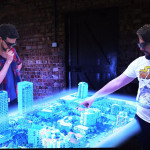
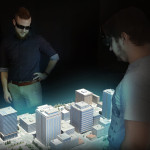
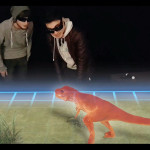
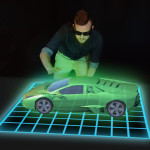
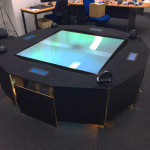
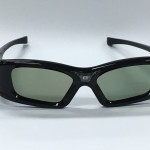
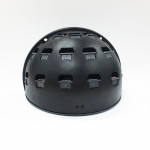
















Hopefully not another Gym Whale, CGI fakery.
Of course, it’s CGI fakery! They’re probably film students.
Australia leads the way in NOTHING! And never forget it.
And Euclideon are rude, to boot. Their most recent YT video just abuses anybody who doubted them, while relentlessly looping the ‘news clip’, also in this article.
There isn’t even any science, behind their claims. Certainly, no mathematical papers are currently published, espousing the principles of graphically rendering atoms in real-time!
Poor old T. Rex. He’s always the first thing that the spin merchants think of when it comes to 3D, virtual reality, holograms etc.
This is interesting thanks Matthew. Made me recall one I prepared earlier. No glasses required. Full 3D. Recently demonstrated in Japan.
Would come in handy in AEC industry, and for town planning, etc. etc . If it can be done with a specially shaped mirror surface, why not with projection techniques?
Wow positivity useful teaching tool. Very creative imaginative system.
It feels like this article comes to an abrupt end, which is disappointing. Would have liked to have heard more about real-time multi-user interaction, dynamic elements of the display, etc., etc. Very keen to look into this tech for future command and control apps, but not at all convinced at this moment in time that we’ve really made the transition from small “Pepper’s Ghost”-like “holographic” products (which seem to have grown out of various crowd-funding platforms) to something that really is a usable tech breakthrough.
Yes very interesting. It reminds me also about our test to construct one such table to train surgeons…it did not require glasses and was back projected on a table with haptic gloves interaction. The idea was too advanced and risky for EU funds…but after 15 years someone made it real. Looking forward to see the results in a few years time. If it works it is a much better tech then any headmounted devices in terms of Ux.
Bob, it works and also utilities our Unlimited Detail algorithm so is also compatible with our software products.
I saw a prototype no-glasses hologram table by Zebra Imaging a couple of years ago. It was a bit disappointing, especially compared to what AR glasses like MS Hololens can display.
I hope it has been patented, Prof Gary Atkinson-Hope (www.techipi.co.za)